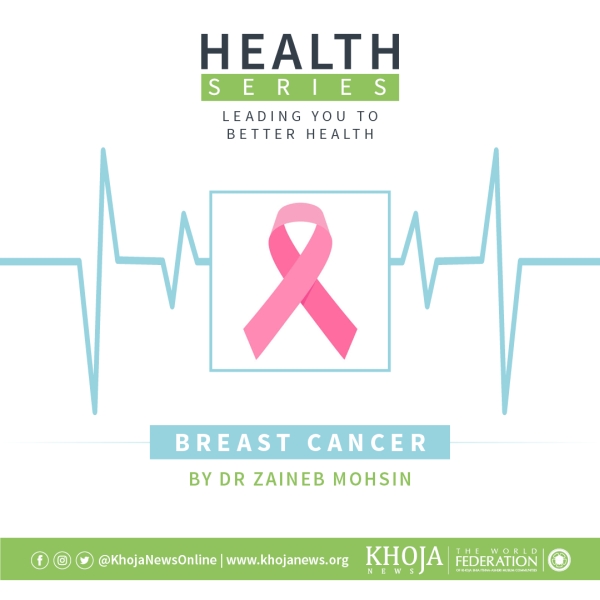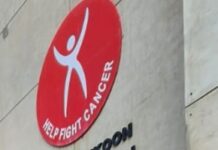Breast cancer is one of the most common cancers. Around one in nine women develop breast cancer at some stage in their lives. Breast cancer develops from a cancerous cell which develops in the lining of a milk forming cells or ducts in one of the breasts. Breast cancer can also develop in men, although this is much less common.

WHAT IS CARCINOMA IN SITU?
Some people are diagnosed when the cancerous cells are still localized within the breast tissue. These are called carcinoma in situ (or non-invasive breast cancer), as no cancer cells have grown out from their original site.
WHAT IS INVASIVE BREAST CANCER?
Most breast cancers are diagnosed when a tumour has grown into the surrounding breast tissue. These are called invasive breast cancers.
They are divided into those where cancer cells have invaded into local blood or lymphatic vessels and those that have not. Invasive breast cancer is able to spread outside the breast.
There are a number of things to look out for which might be breast cancer signs:
- a new lump or thickening in your breast or armpit
- a change in size, shape or feel of your breast
- skin changes in the breast such as puckering, dimpling, a rash or redness of the skin
- fluid leaking from the nipple in a woman who isn’t pregnant or breast feeding
- changes in the position of the nipple

RISK FACTORS
What are the risk factors for breast cancer?
Although breast cancer can develop for no apparent reason, there are certain risk factors which increase the chance that breast cancer will develop. These include:
- Age. The risk of developing breast cancer roughly doubles for every 10 years of age. Most cases develop in women over the age of 50.
- Where you live. The rate of breast cancer varies between countries. This may reflect genetic or environmental factors.
- Family history. This means if you have close relatives who have or have had breast cancer. In particular, if they were aged under 50 when diagnosed. About 1 in 20 cases of breast cancer are caused by a faulty gene which can be inherited. The genes BRCA1 and BRCA2 are the most common faulty genes.
- If you have had a previous breast cancer.
- Being childless, or if you had your first child after the age of 30.
- Not having breast-fedyour children.
- Early age of starting periods (before the age of 12).
- Having a menopause over the age of 55.
- A previous history of skin, lung bowel, womb or certain types of blood cancer.
INITIAL ASSESSMENT
If you develop a lump or symptoms which may be breast cancer, you will normally be referred to a specialist. Sometimes a biopsy of an obvious lump is arranged, but other tests may be done first, such as:
- Mammogram. This is a special X-ray of the breast tissue.
- Ultrasound scan of the breast.

BIOPSY – TO CONFIRM THE DIAGNOSIS
A biopsy is a procedure in which a small sample of tissue is removed from a part of the body. The sample is examined under the microscope, to look for abnormal cells.
The biopsy sample can confirm or rule out breast cancer.
ASSESSING THE EXTENT AND SPREAD
If you are confirmed to have breast cancer, further tests may be needed to assess if it has spread, usually blood tests and scans of the body including the bone.
TREATMENT
Treatment options which may be considered include surgery, chemotherapy, radiotherapy and hormone treatment. Often a combination of two or more of these treatments is used. The treatments used depend on:
- The cancer itself – its size and stage (whether it has spread), the grade of the cancer cells, and whether it is hormone responsive AND
- The woman with the cancer – your age, whether or not you have had your menopause, your general health and personal preferences for treatment.
The types of operation which may be considered are:
- Breast-conserving surgery. This is often an option if the tumour is not too big. A lumpectomy (or wide local excision) is one type of operation where just the tumour and some surrounding breast tissue are removed.
- Removal of the affected breast (mastectomy). This may be necessary if there is a large tumour or a tumour in the middle of the breast. It is often possible to have breast reconstructive surgery to create a new breast following a mastectomy. This can often be done at the same time as the mastectomy, although it can also be done months or years later. There are now many different types of reconstruction operations available.

WHAT IS THE BREAST CANCER SURVIVAL RATE?
The outlook (prognosis) has greatly improved in recent years. Deaths from breast cancer are now at the lowest ever in 40 years. This is mainly due to the improvements in the treatment of breast cancer. The outlook is best in those who are diagnosed when the cancer is still small and has not spread. More breast cancers are also now being diagnosed and treated at an early stage. In general, the more advanced the cancer (the more it has spread) then the less chance that treatment will be curative.
Generally for women with breast cancer in England:
- Around 95 out of every 100 women (around 95%) survive their cancer for 1 year or more after diagnosis
- Around 85 out of every 100 women (around 85%) will survive their cancer for 5 years or more after diagnosis
- Around 75 out of every 100 women (around 75%) will survive their cancer for 10 years or more after diagnosis
Mammography is a special X-ray test and aims to detect breast cancer at an early stage when treatment is most likely to be curative. Women should have regular breast screening especially after the age of 50.
CAN BREAST CANCER BE PREVENTED?
A lot of breast cancers are detected at an early stage, by breast screening via mammography. All women of every age should carry out a self-examination to look for any unusual changes regularly.

There is some evidence that regular exercise may reduce your risk of breast cancer by as much as a third. An analysis of 35 studies found that highly active women had a 14% lower risk of developing breast cancer compared with the least active women.
Another study showed that the more active a woman is, the more she can reduce her risk of breast cancer. For example, for every 2 hours a week a woman spends doing moderate to vigorous activity, the risk of breast cancer falls by 5%.
If you have been through the menopause, it is particularly important you are not overweight or obese as obesity increases the risk of breast cancer
Research has shown that women who regularly take aspirin have a slightly lower risk of developing breast cancer. There are trials in progress that will give us more information in the future. You shouldn’t take these medicines if you have any history of stomach ulcers and always discuss this with your doctor.
Authored by:
Dr Zaineb Mohsin
MBBch, MSc in Critical care (UK), MRCP(UK)
Qualified as a physician, trained in Endocrinology and Diabetes from Imperial NHS Trust and currently working as a research fellow in Metabolic bone disease at Oxford University














